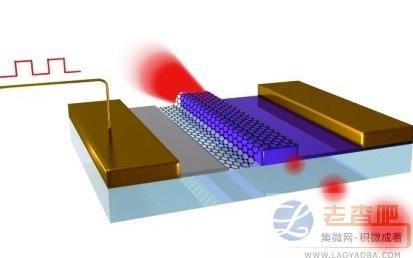 The National Science Foundation (NSF) Nanoscale Science and Engineering Center, located at the University of California-Berkeley, recently developed a so-called global smallest graphene Graphene modulator; this research team, led by Professor Xiang Baike’s Xiang Zhang, claimed that the research breakthrough will enable downloading of the entire movie on smart phones in a few seconds.
The National Science Foundation (NSF) Nanoscale Science and Engineering Center, located at the University of California-Berkeley, recently developed a so-called global smallest graphene Graphene modulator; this research team, led by Professor Xiang Baike’s Xiang Zhang, claimed that the research breakthrough will enable downloading of the entire movie on smart phones in a few seconds. Current optical modulators accelerate the long-distance communication between systems by switching the laser light on and off with electronic signals; while high-speed optical communication technology is shifting to short-range communication and even can be applied to portable devices in the future. The device speeds up the transmission of large files.
Unfortunately, today's optical components are discrete, bulky and require the use of three-five semiconductor materials such as indium gallium arsenide. For this, Zhang said that if a modulator is made from graphene (pure carbon sheet), the components needed for high-speed optical communication technology can be made small enough, the cost can be reduced, and integrated into mobile device chips.
The graphene optical modulator developed by Zhang's research team is 100 times smaller than the equivalent of a typical tri-substance semiconductor and has an area of ​​only about 25 square microns (Micron). The operating principle of this device is to apply an alternating electric field on the optical waveguide made of graphene. When the electronic signal is at the peak, the electric field will cause the graphene to become opaque, thus closing the waveguide driven by the laser. And when close to the center of the modulation range, the graphene becomes transparent and then turns on the laser.
Known as the smallest graphene modulator in the world, it uses electronic signals to switch lasers. It is expected to realize fast, smaller-sized and lower-cost optical communication solutions. In the process of developing new components, researchers have also found that graphite The operating frequency of alkene is much wider than that of a typical narrowband (10nm) triple-substrate semiconductor modulator, which can range up to 100 times across thousands of nanometers - from ultra-ultraviolet to infrared; Zang said, The prototype developed by his research team is operating at 1GHz but can be extended to 500GHz.
“The graphene material allows us to produce a very small size modulator, and the speed is expected to be ten times faster than the current technology;†Zang is with fellow professor Feng Wang and postdoctoral fellow Ming Liu, Thomas Zentgraf, and guest. Professor Baisong Geng, as well as doctoral candidates Erick Ulin-Avila and Long Ju, jointly conducted the study.
Ningbo Wewinmagnet Co.,Ltd , http://www.wewinmagnet.com